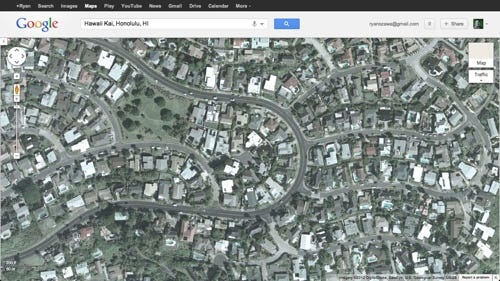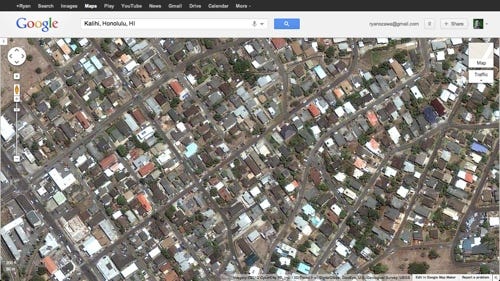More Income, More Trees

The wealthier the city, the thicker the trees. So writes Tim de Chant of the 'Per Square Mile' blog, focused on density and geography. In 'Urban Trees Reveal Income Inequality,' he cites a 2007 study:
They found that for every 1 percent increase in per capita income, demand for forest cover increased by 1.76 percent. But when income dropped by the same amount, demand decreased by 1.26 percent. That’s a pretty tight correlation.
He followed up his post by asking whether income inequality would be visible from space, and turned to Google Maps. He shares examples from wealthy and low-income neighborhoods in Oakland, Houston, Chicago, even Beijing and Rio de Janeiro.
There are a number of reasons why the images might not make for perfect comparisons, from regional topography and climate (I'd expect that wealthier people might naturally flock toward cooler, wetter areas in a region) to the time of year the satellite imagery was taken. Still, at first glance, they seemed to support the general theory.
He also asked for more examples, so I captured Google imagery from around Oahu. I knew I couldn't try to compare obvious high-income, densely populated lush valleys like Manoa, or the dry but mostly empty fields of Kalaeloa. I focused on places where I could get similar, same-magnification views full of mostly residential lots: Ewa Beach, Kalihi, Mililani, and Hawaii Kai.
Again, these neighborhoods have many differences besides average household incomes. Mililani is a meticulously planned community anchored by greenways and parks at a high altitude, so a definite outliner (but a decent 'middle income' example). Lower-income Ewa Beach and wealthy Hawaii Kai are both at sea level, while Kalihi is inland and stretches into a green valley. Finally, the imagery is definitely from different photo sets, and thus likely several years apart let alone seasons.
Even so, at a glance, I bet someone who doesn't even know anything about these neighborhoods can figure out where people with higher incomes live. While the difference between Ewa Beach and Hawaii Kai is more subtle, Kalihi versus Mililani is striking.
Ewa Beach:

Hawaii Kai:

Kalihi:

Mililani:

Definitely check out Tim de Chant's blog posts for much more nuanced analysis, including a few unexpected reasons for the disparity, and the benefits of trees.
What do you think? Obvious? Misleading? Is Hawaii geography too diverse for this kind of broad conclusion to comfortably apply?




